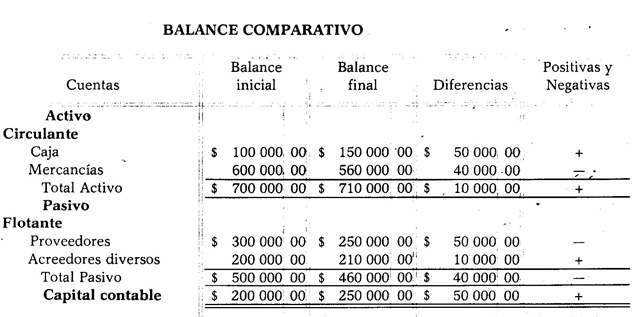10 Examples of Religious Legends
Examples / / April 18, 2023
The religious legends They are narratives that include fantastic events and that relate miracles or hagiographic stories, that is, of the lives of saints. These legends can be local or universal and ancient or contemporary.
Legends are popular and anonymous stories of oral transmission that originated to give explanations about various phenomena, to respond to concerns or to transmit teachings.
Although these stories include wonderful or extraordinary beings, events or places, they generally mention places, dates or characters that exist or existed in reality. In addition, many people believe that they are true stories.
- See also: legend types
Characteristics of religious legends
- Topics. The themes of religious legends are sanctifications (if a common subject is turned into a saint), deifications (if a person is conceived as a god), canonizations (if the Catholic Church recognizes a person as a saint), or miracles. In addition, in Latin America a large part of these narratives are linked to the Christian religion.
- Characters. The characters in religious legends are saints, gods, or ordinary people who are sanctified or who help those in need.
- Time. The time of the legends is real, because, generally, reference is made to when the events occurred. This feature differentiates the legend from the myth, because the latter is never framed in historical time.
- Places. The places of religious legends exist or existed in reality.
- worldview. Religious legends manifest the way of thinking and knowledge about the world of the society in which they originated.
- Purpose. The main purpose of religious legends is to transmit a moral teaching, because the main character is usually a role model.
Examples of religious legends
- The legend of the Lord of miracles
This legend tells a story that includes some real events and other miraculous ones. In 1582, Fray Francisco de Victoria, the Bishop of Tucumán, assisted in the founding of the city of Salta. Some years later, in 1592, he was in Spain and sent two sculptures to America, one of the Virgen del Rosario to Córdoba and one of the Crucified Lord to Salta.
But the gifts did not reach those places, instead they appeared floating in a port in Peru. When the authorities of the place found out what had happened, they decided to send the sculptures to their respective destinations, for this reason, the Crucified Lord was placed in the Mother Church of Salta.
In 1692, an earthquake occurred that devastated the city of Esteco, located near Salta. When the people of Salta found out what had happened, they went to the Iglesia Matriz to pray to the sculpture of Jesus, to ask that no more damage be done. And so it was, in Salta tremors were felt, but there were no major landslides.
- The legend of Santa Margarita
This legend tells the hagiography of Santa Margarita. Marina Margarita was the daughter of a non-Christian priest and she converted to Catholicism. Upon learning of this event, her father had her imprisoned.
When she was in prison, a demon appeared that wanted to devour her, but since the Christian was wearing a cross, she managed to defeat the beast. In addition, she was tortured very cruelly, but it is said that she was able to endure the pain and survive thanks to her faith.
It is said that before she was murdered, her hands were freed from the chains and a golden aura appeared above her head and a dove that had a golden crown in its beak.
- The Legend of the Difunta Correa
This legend tells the story of the Difunta Correa, a popular saint from northern Argentina. At the beginning of the 19th century, Deolinda Correa, her son, and her husband lived in the countryside. One day representatives of the army went to recruit her husband to fight in the civil war. He had to leave and she was left alone in charge of her little one.
After a few days, Deolinda left her home with her son to follow in her husband's footsteps, but after a few days she died in the desert. However, some peasants found the body of her mother and her son, who was miraculously still alive. These good people adopted and cared for the little one and buried the woman.
A small altar was built in the tomb of the Deceased Correa, since there are other miraculous events associated with her figure.
- The legend of the Virgin of Fatima
This legend tells the story of an apparition of the Virgin and has that name because the events occurred in Fatima, Portugal. In 1917, three children said that they had repeatedly seen the Virgin Mary in the countryside.
On May 13 of that year, the children were taking care of their sheep and saw that the Virgin was on a tree, who told them to return the next day.
The boys returned and Maria ordered them to pray constantly. In addition, it is believed that on other occasions she also revealed a secret to them and certain events that would occur in the future.
- the legend of heaven
This legend explains the origin of the Milky Way. It is said that Mary, Joseph and Jesus had to escape from people who wanted to kill them and they went on their donkey towards heaven. The path they made left a clear mark, that is, the Milky Way.
In another version of this legend, it is said that this mark was transformed into a river, through which all people have to pass after dying.
- The legend of Saint Patrick and the leprechauns
This legend relates the story of Saint Patrick to wonderful events. Saint Patrick lived in the 5th century BC. c. and he was a promoter of Catholic doctrine in Ireland. It is said that when he began to evangelize, the Druids, that is, the priests of the Celts and Gauls, sent the goblins to the church that the Christian missionary had built, to bother the people who came to pray.
But Saint Patrick expelled the little creatures in the name of God and they never entered the temple again. For this reason, in Ireland it is believed that an image of this saint serves to protect oneself from goblins.
- The legend of the sowers and the Lord
This legend narrates a story related to appearances of Jesus in the Argentine fields. It is said that a very humble man was walking near a crop, saw a farmer and said:
- What are you planting?
"Wheat," replied the farmer.
—Then, wheat you will obtain.
The man continued walking, he met another farmer and asked him:
- What are you planting?
"I'm planting cotton," replied the second farmer.
—Then, cotton you will obtain.
The humble continued walking until he saw another farmer and said:
- What are you planting?
"Stones," answered the third farmer with an ironic tone.
"Then you will get stones."
Time passed, the first farmer got wheat; the second, cotton; and the third, stones. It was not a coincidence, since the humble man was Jesus himself.
- The legend of Santa Mariana de Jesus de Paredes
This legend narrates the miracles of Santa Mariana de Jesús de Paredes, an Ecuadorian woman. Since Mariana was very little, she prayed a lot and helped those most in need. But despite showing great devotion, she was never able to join any religious order. For this reason, she went to live in solitude and dedicated herself exclusively to leading a religious life.
In 1945, in Quito there was an epidemic and an earthquake that destroyed several houses. Then Mariana offered her life to Jesus in exchange for these catastrophes ending. It is said that Mariana died a few days later and that both the disease and the earthquakes came to an end.
- The Legend of the San Francisco Well
This legend narrates a miracle related to San Francisco Solano, a Spanish friar who missioned in America. Between 1590 and 1594 this saint was in Tucumán, which today belongs to Argentine territory, and he went to a town that was in a desert area. The people of this place did not have water to drink or to give to their animals.
So San Francisco went to the middle of the desert, asked God to help the villagers and water began to gush from the earth until a huge lake was formed. In addition, fish appeared and it is said that many people went to bathe in that well, because the water had healing powers.
- The legend of the Virgin of Ocotlán
This legend narrates an apparition of Mary. It is said that in 1541 Juan Diego Bernardino was walking through the forest of Ocotlán, Mexico, and suddenly the Virgin appeared to him. She asked him:
-Where are you going?
—I'm going to the river, because I have to go get water for the sick. the man answered.
—Follow me, I'll take you to a spring where there is water that will cure you all.
Juan Diego followed María, at the spring he filled their vessels with water, returned to his town and gave it to her. she offered to the sick, who after a few days began to feel better until finally they healed.
A few weeks later the Virgin reappeared and told Juan Diego:
—You have to look for an ocote that has an image of me and you must take it to the chapel of San Lorenzo.
"Yes, Maria, I will." Juan Diego replied.
And finally, after much searching, Juan Diego found the ocote and placed it on the altar of the chapel.
Follow with:
- mayan legends
- ancient legends
- japanese legends
- mexican legends
- Colombian legends
Interactive test to practice
References
- Cherudi, S. (1975). The folkloric legend in Argentina. Relations of the Argentine Society of Anthropology, 9, 69-75. Available in: SEDICI
- Rosalia, P. and Rionda, P. (2015). Notes for conferences: The revaluation of oral traditions as an educational strategy. Tales of the Wind.
- Vidal de Battini, B. AND. (1984). Popular tales and legends of Argentina. Volumes VII and VIII. Argentine Cultural Editions.


